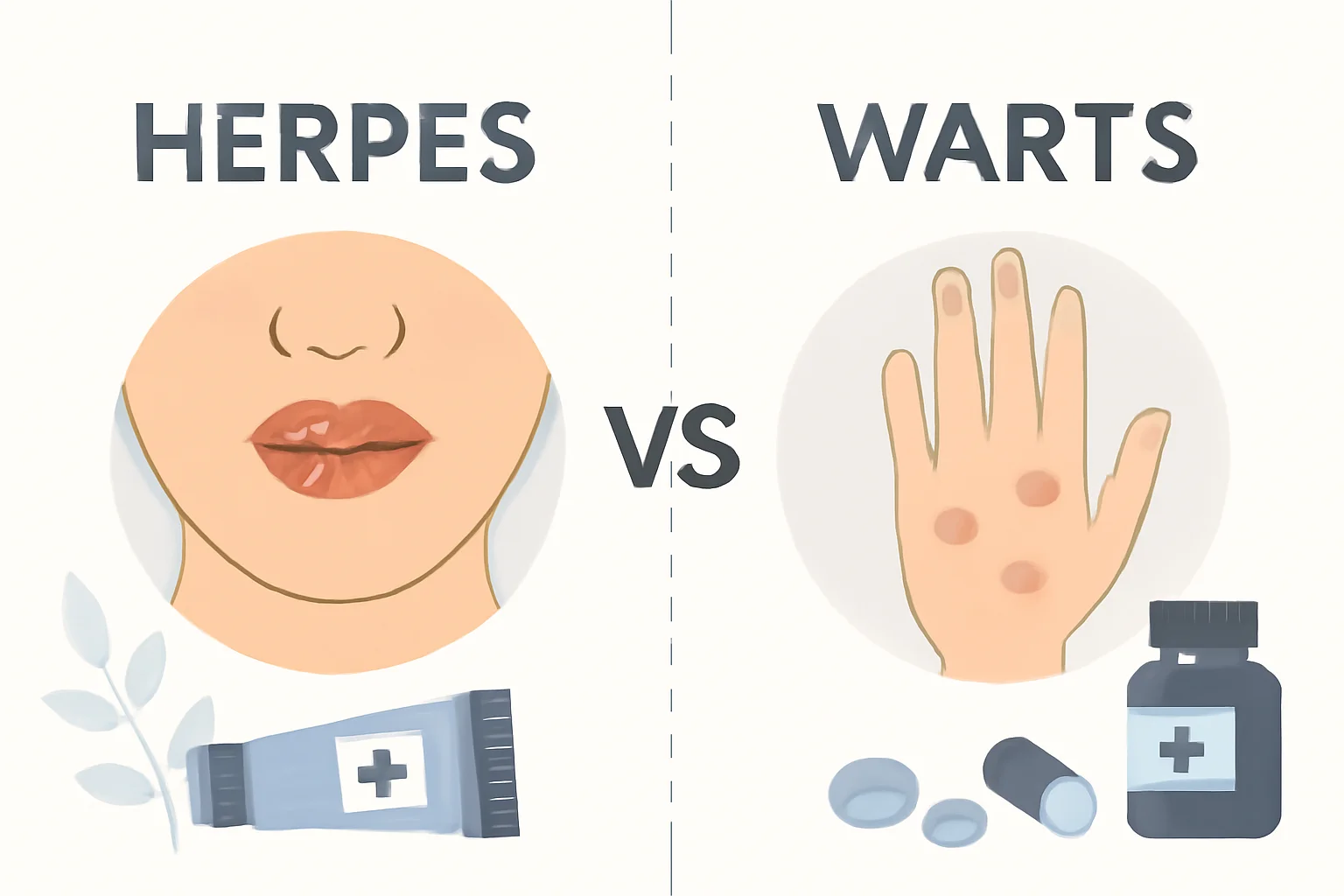
Herpes or Wart: Which is More Dangerous and How to Treat It?
The herpes and warts are skin problems that affect many people, and although there are many similarities between them, the two are infections caused by different pathogens. Herpes is of viral origin, while warts are consequences of the human papillomavirus (HPV). Both conditions can appear at any age and may present various symptoms. Herpes usually causes painful blisters that can be found on the skin or mucous membranes, while warts are mostly painless but can cause aesthetic issues.
Although both conditions are well-known, many people do not realize how important it is to differentiate between them in terms of treatment and prevention. The treatment approaches for herpes and warts require different strategies, and an accurate diagnosis is key to effective treatment. People often confuse the two conditions, which can lead to misunderstandings and thus to inappropriate treatment. The aim of this article is to clarify the differences between herpes and warts, as well as to provide an overview of their treatment and prevention.
Herpes: Symptoms and Causes
Herpes is a viral infection caused by the Herpes Simplex Virus (HSV). There are two main types: HSV-1, which typically causes oral herpes, and HSV-2, which is responsible for genital herpes. The transmission of herpes usually occurs through direct contact, such as kissing, sexual contact, or touching infected skin areas.
The most common symptoms of herpes include the appearance of painful blisters that develop on the skin or mucous membranes. These blisters can initially cause itching and a burning sensation, and soon become filled with fluid and eventually burst, leaving sores behind. Herpes outbreaks can also occur due to stress, illness, hormonal changes, or other factors.
The treatment of herpes generally involves the use of antiviral medications that help reduce symptoms and shorten the duration of the infection. Topical treatments, such as pain relief creams, can also be useful in alleviating symptoms. It is important to note that the herpes virus remains in the body, and the infection can recur, so following hygiene rules and avoiding infected areas is crucial for prevention.
Warts: Symptoms and Treatment Options
Warts are skin problems caused by the human papillomavirus (HPV) and can come in various types. The most common forms include common warts, flat warts, and genital warts. Warts typically spread through contact, and anyone can get them, especially individuals with a weakened immune system.
The appearance of warts can vary; they usually present as small, rough-textured bumps and can occur anywhere on the skin, most commonly on the hands and feet. Genital warts, on the other hand, appear on or around the genital area and can be particularly sensitive, causing pain and discomfort.
Warts can be treated in various ways. The most common methods include freezing (cryotherapy), laser treatment, and the use of topical medications that help remove the warts. It is important to note that treatments used for warts do not always guarantee a permanent solution, as the virus can reach deeper layers of the skin, making recurrence likely.
The best way to prevent warts is to follow hygiene rules, such as regular handwashing and being cautious in public places. Strengthening the immune system can also help prevent HPV infections, so maintaining a proper diet and lifestyle is important.
Differences Between Herpes and Warts
Although herpes and warts are similar in many aspects, there are fundamental differences between them that determine their treatment and prevention. First of all, herpes is a viral infection, while warts are skin problems caused by the HPV virus. This difference is significant in itself, as the treatment approaches are different.
In the case of herpes, the virus remains in the body, and the infection can recur. In contrast, warts are generally found on the surface of the skin, and while anyone can contract them, their appearance is often self-limiting, meaning they can disappear on their own after a while. The treatment of herpes usually requires antiviral medications, while local treatments or physical removal methods are the most common for warts.
The mode of transmission is also an important aspect. Herpes spreads through direct contact, such as kissing or sexual relations, while warts spread through contact with infected skin areas. Therefore, avoiding personal relationships is particularly important in the case of herpes, while avoiding contact is key for warts.
Finally, it is also worth considering the psychological impacts. Herpes, especially the genital form, can often cause stigma and social fear, while warts are generally less associated with such negative feelings. All these differences can help in choosing the appropriate diagnosis and treatment.
**Warning:** This article does not constitute medical advice. In case of health issues, everyone should follow their doctor’s advice.

